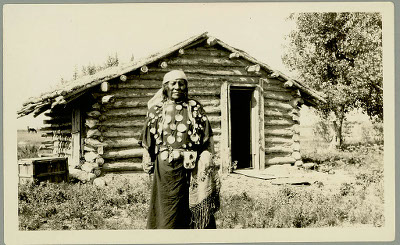
Photograph by C. H. Asbury, 1928. Courtesy of the Smithsonian Institution, National Anthropological Archives (INV 00476300).
This chapter provides an introduction to the significant diversity in gender roles, sexualities, and identities among the native peoples of the United States—American Indians, Alaskan Natives, and native Hawaiians. Following an overview of the varying characteristics, roles, and meanings attributed to sexual and gender diversity in native traditions, the lives of four historical two spirits who played notable roles in American history are explored.
Two Spirits in Native Tradition: Roles, Genders, Identities, and Diversity
In 1564, René Goulaine de Laudonnière arrived in Florida to assert French claims to the region, homeland of the village-dwelling Timucua people.[1] On a forced march through the dense Florida woodlands, his party found itself exhausted and far from its destination. At that moment, he reported, “We met an Indian woman of tall stature, which also was an Hermaphrodite, who came before us with a great vessell full of cleere fountaine water, wherwith she greatly refreshed us…. And I beleeve that without the succour of that Indian Hermaphrodite… we had taken up our lodging all night in the wood.”[2] Later he encountered another “hermaphrodite” serving as an emissary of a Timucuan king. Read more » [PDF 2.8 MB]
[1] Timucuan Ecological and Historic Preserve, Florida (National Preserve established and listed on the NRHP on February 16, 1988); Fort Caroline National Memorial, Florida (established January 16, 1953; listed on the NRHP on October 15, 1966).
[2] René Goulaine de Laudonnière, in The Principal Navigations, Voyages, Traffiques, and Discoveries of the English Nation.... vol. 9, 1-100, ed. Richard Hakluyt (Glasgow, Scotland: James MacLehose and Sons, 1904), 16, 56, 69.
The views and conclusions contained in the essays are those of the authors and should not be interpreted as representing the opinions or policies of the U.S. Government. Mention of trade names or commercial products does not constitute their endorsement by the U.S. Government.
Part of a series of articles titled LGBTQ America: A Theme Study of Lesbian, Gay, Bisexual, Transgender, and Queer History.
Last updated: August 11, 2017
